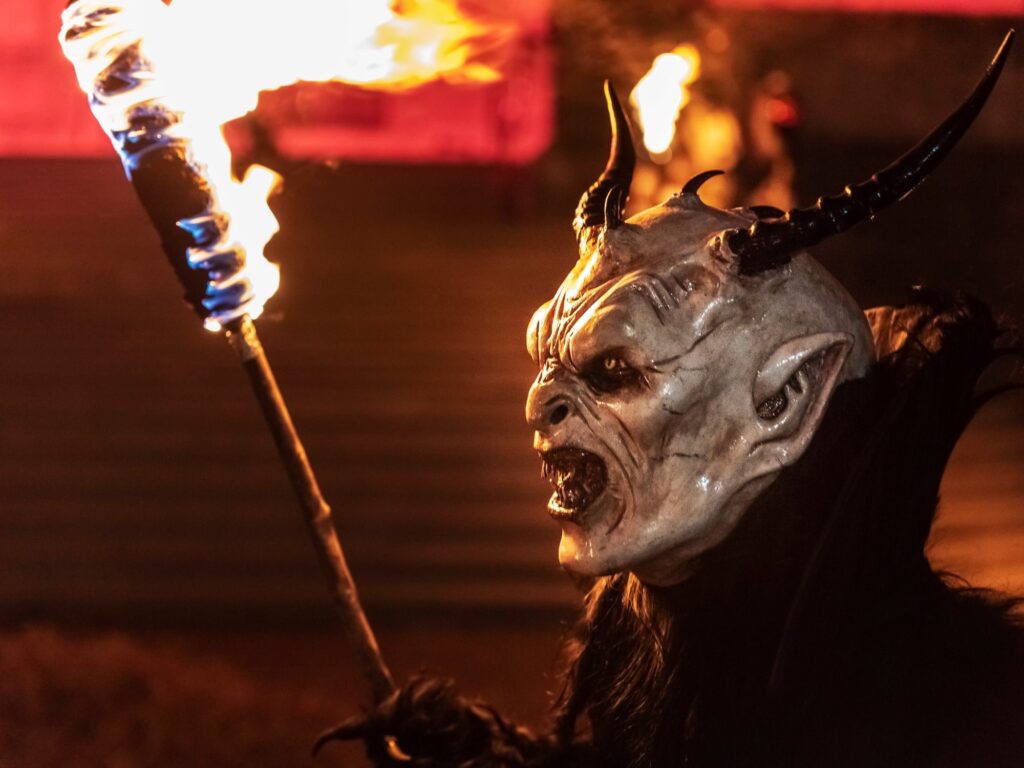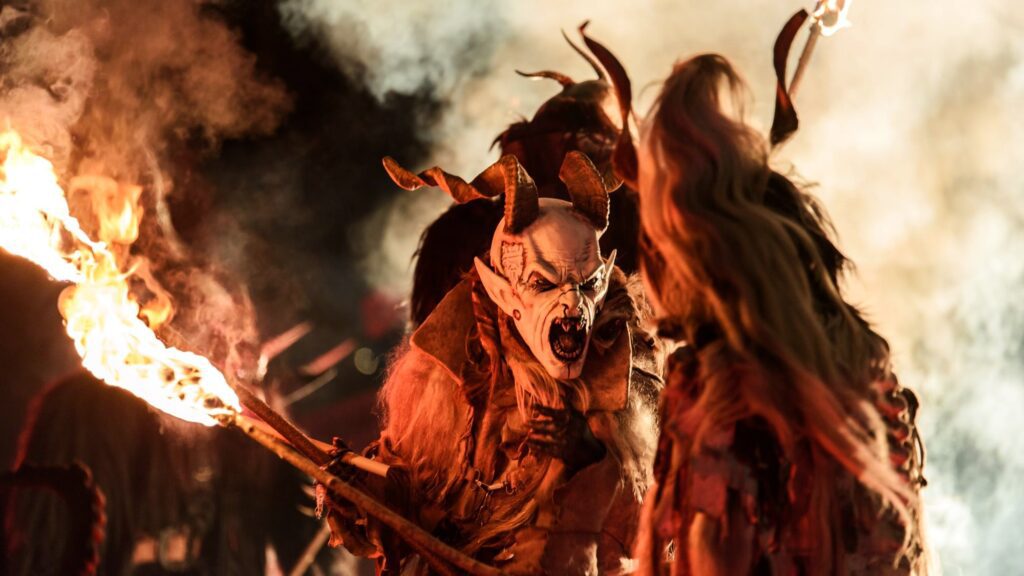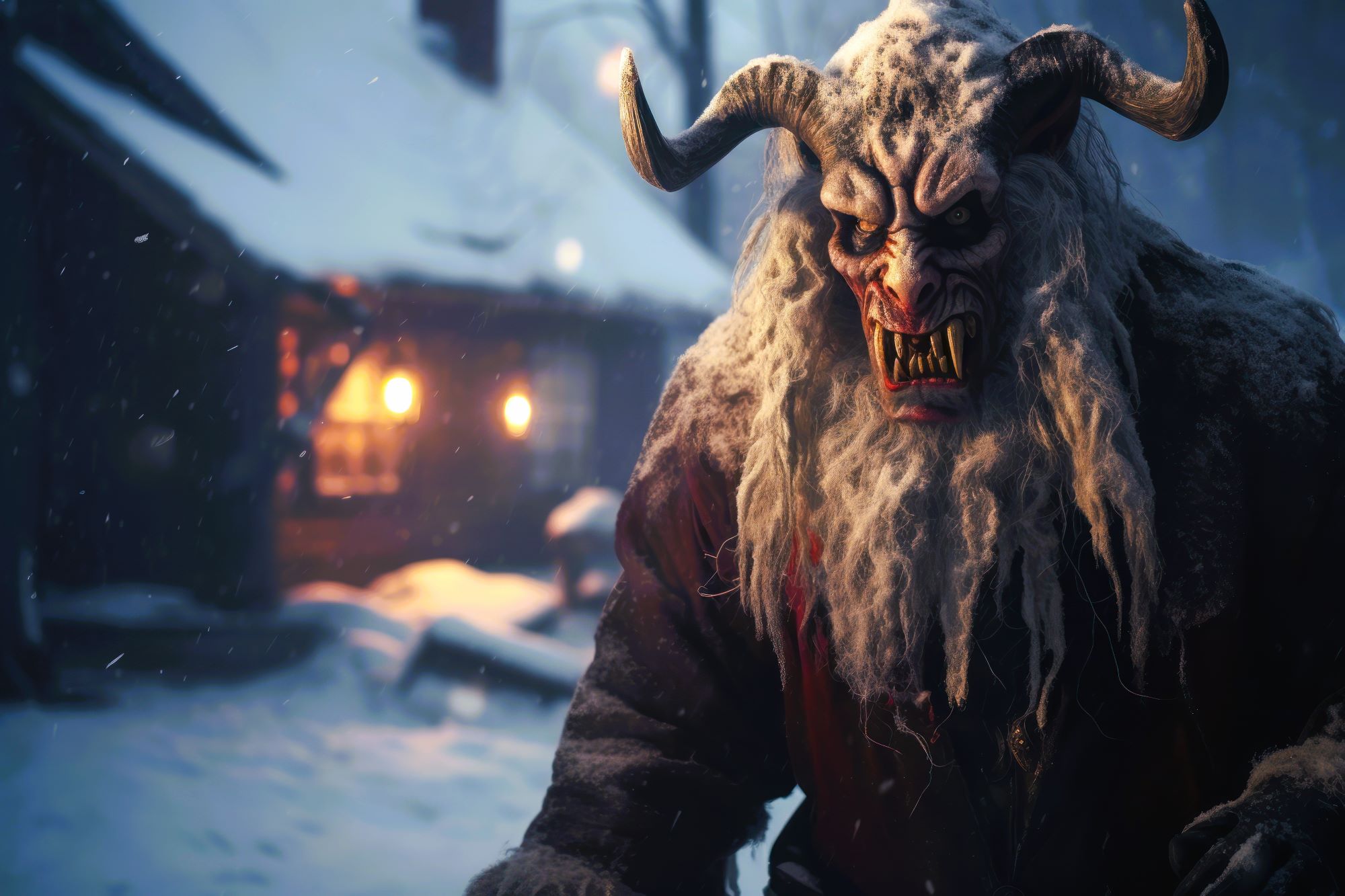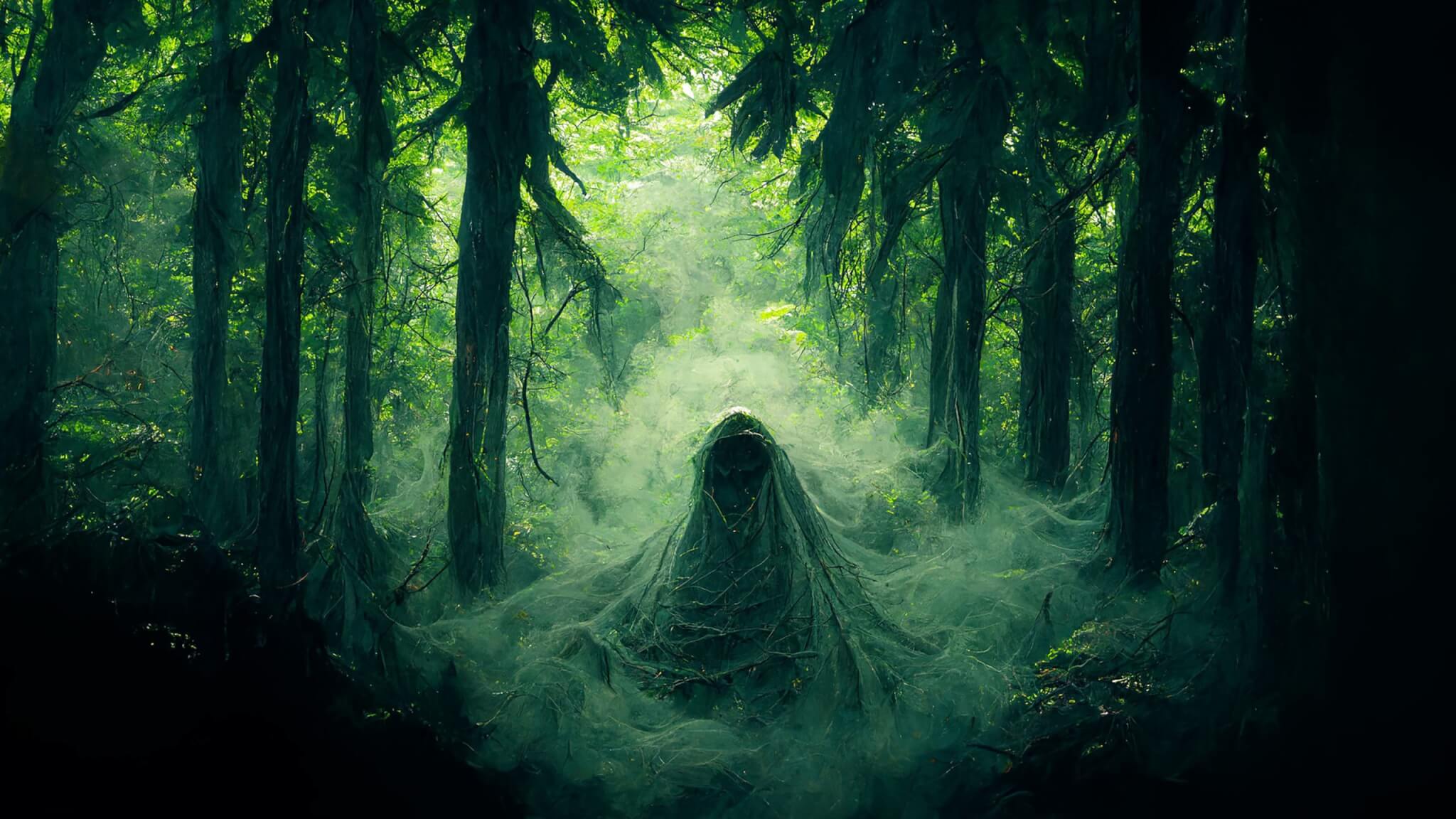Krampus, the half-goat, half-demon beast with a taste for naughty children, is experiencing a chilling resurgence. This monstrous counterpart to Saint Nicholas, a fixture of Central European folklore, is clawing his way back into the spotlight. But what exactly is the story behind Krampusnacht, and how does he fit into the complex puzzle of Christmas traditions?
Where Does Krampus Come From? A Duality of Reward and Punishment
Traditionally hailing from the Alpine regions of Central and Eastern Europe, particularly Austria, Bavaria, Slovenia, and Hungary, Krampus serves as the yin to Saint Nicholas’ yang. While Saint Nicholas rewards good children with treats and gifts on December 5th (St. Nicholas Day), Krampus arrives on Krampusnacht (December 5th night) to punish the bad ones.
Imagine a monstrous figure with fearsome horns, a long, lolling tongue, and a switch woven from birch rods. This is the traditional depiction of Krampus, a figure designed to terrify children into behaving well. In some variations, he carries a sack to abduct particularly naughty children, whisking them away to his shadowy lair. This dark aspect of Christmas serves as a potent reminder: good deeds are rewarded, while bad behavior comes with consequences.
What is Krampusnacht? – A Night of Raucous Revelry and Warnings
Krampusnacht isn’t just about fear; it’s a boisterous affair steeped in tradition. Men don elaborate Krampus costumes and masks, transforming into terrifying figures who parade through the streets, clanging chains and bells to create a cacophony. This serves a two-fold purpose: to frighten children and to drive away evil spirits. Often, these parades culminate in visits to houses where children recite poems or sing songs for Saint Nicholas. Well-behaved children receive treats from the benevolent Saint, while naughty ones might get a whack from Krampus’s switch or a lump of coal – a stark reminder of their misdeeds.
Krampusnacht traditions vary by region. Sometimes, Krampus is joined by other fantastical figures, like the angelic Christkindl or the demonesque Perchta and Befana. These variations highlight the rich tapestry of folklore surrounding Christmas in Central Europe.



A History of Suppression and Resurgence: The Return of Krampus
The rise and fall of Krampus is intertwined with the evolution of Christmas itself. In the 19th and early 20th centuries, a push for standardized Christmas celebrations across Europe led to a decline in Krampus’s popularity. He was deemed too scary and clashed with the emerging sentimental and child-centered vision of Christmas. Additionally, the horrors of World War I dampened the appetite for such dark traditions.
However, he is back with a vengeance in recent decades. This resurgence can be attributed to several factors. There’s a growing interest in exploring the darker and more diverse aspects of Christmas traditions. Additionally, he resonates with a modern audience drawn to anti-heroes and complex characters. Movies like “Krampus” (2015) and shows like “The Witcher” have introduced Krampus to a wider audience, making him a pop culture phenomenon.
How is Krampus Celebrated? – Krampusnacht Traditions Around the World
While Krampusnacht celebrations are most prevalent in Central Europe, there are enthusiasts around the world who hold Krampus-themed events year-round. These events feature parades, costume contests, and merchandise for those who want to embrace the dark side of the holiday season.
Is Krampus Scary? – The Psychology of Fear
The fear of Krampus is a powerful motivator for good behavior, particularly among children. The psychological impact of him can be significant, serving as a deterrent for bad behavior. However, it’s important to note that traditions surrounding Krampus vary in intensity. In some regions, he is a more playful figure, while in others, he is a truly terrifying monster.
A Duality of Reward and Punishment
Krampus and Santa Claus represent the duality of human nature – the capacity for both good and evil. While Santa rewards good children, Krampus punishes the bad. This contrast serves as a reminder of the importance of good behavior and the consequences of bad choices.



Beyond Christmas: Krampus as a Modern Symbol
The modern interpretation of Krampus extends far beyond the Christmas season. He’s become a symbol of rebellion against authority and a reminder that not everyone gets a happy ending. Merchandise, from t-shirts to mugs, are readily available for fans seeking a taste of the macabre. Krampus-themed events are held year-round, attracting those who appreciate the character’s complexity and those who simply enjoy a good scare.
But the idea also serves as a form of social commentary. He embodies the fear of punishment and the ever-present potential for bad behavior to have consequences. In an age of instant gratification, Krampus serves as a reminder of the importance of delayed gratification and personal responsibility.
The Enduring Legacy of Krampus: A Complex Figure for a Complex Holiday
Krampus is more than just a scary Christmas character haunting folklore. He’s a multifaceted figure that reflects the duality of human nature – the capacity for both good and evil. He represents the shadow side of Christmas, a reminder that the holiday season isn’t always filled with unbridled joy and peace. As Krampus’s popularity continues to surge, it’s important to understand his historical roots and the cultural significance he carries.
Whether you see him as a terrifying monster or a misunderstood anti-hero, Krampus is a fascinating figure that adds depth and complexity to our understanding of Christmas traditions.


